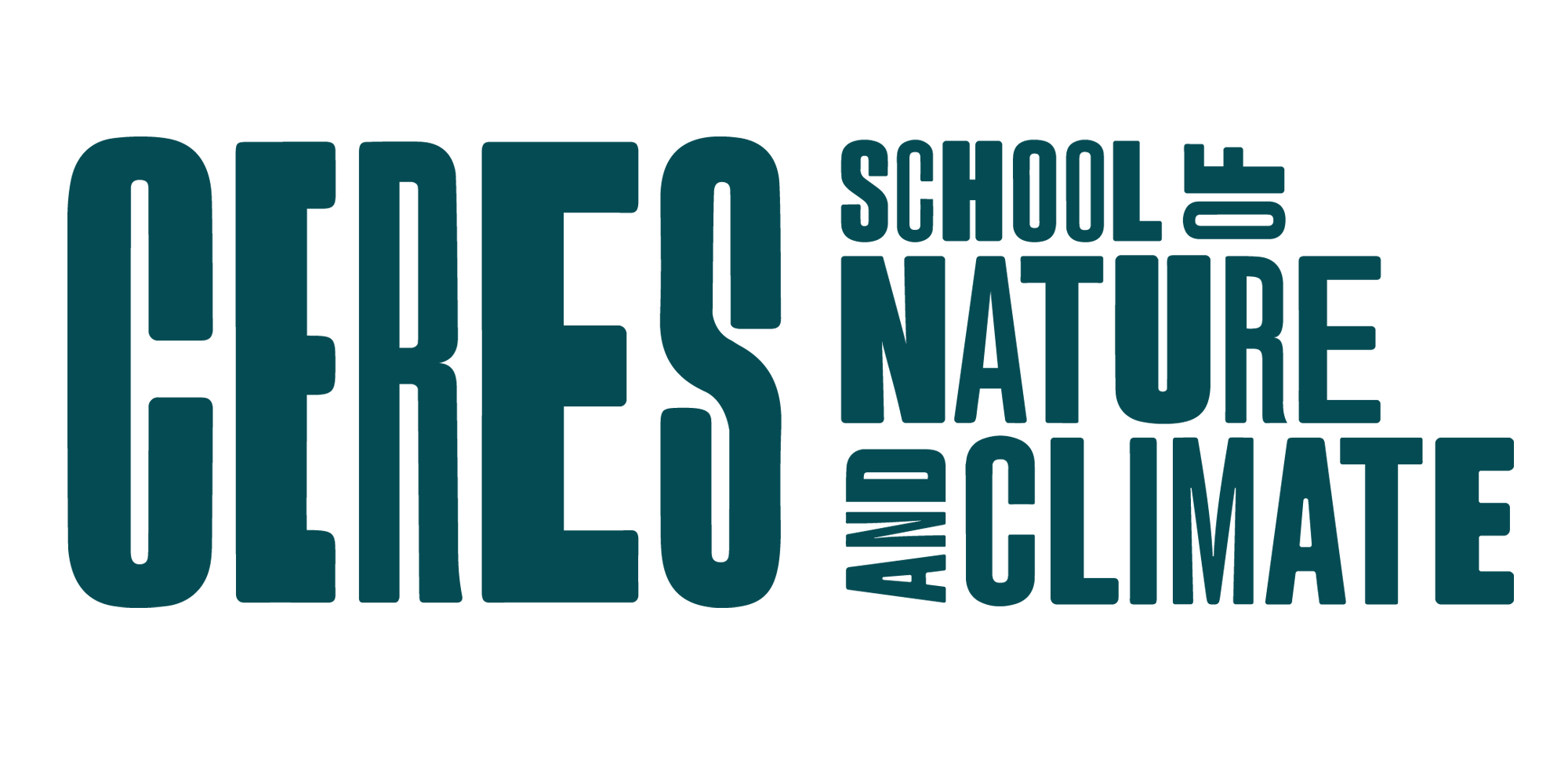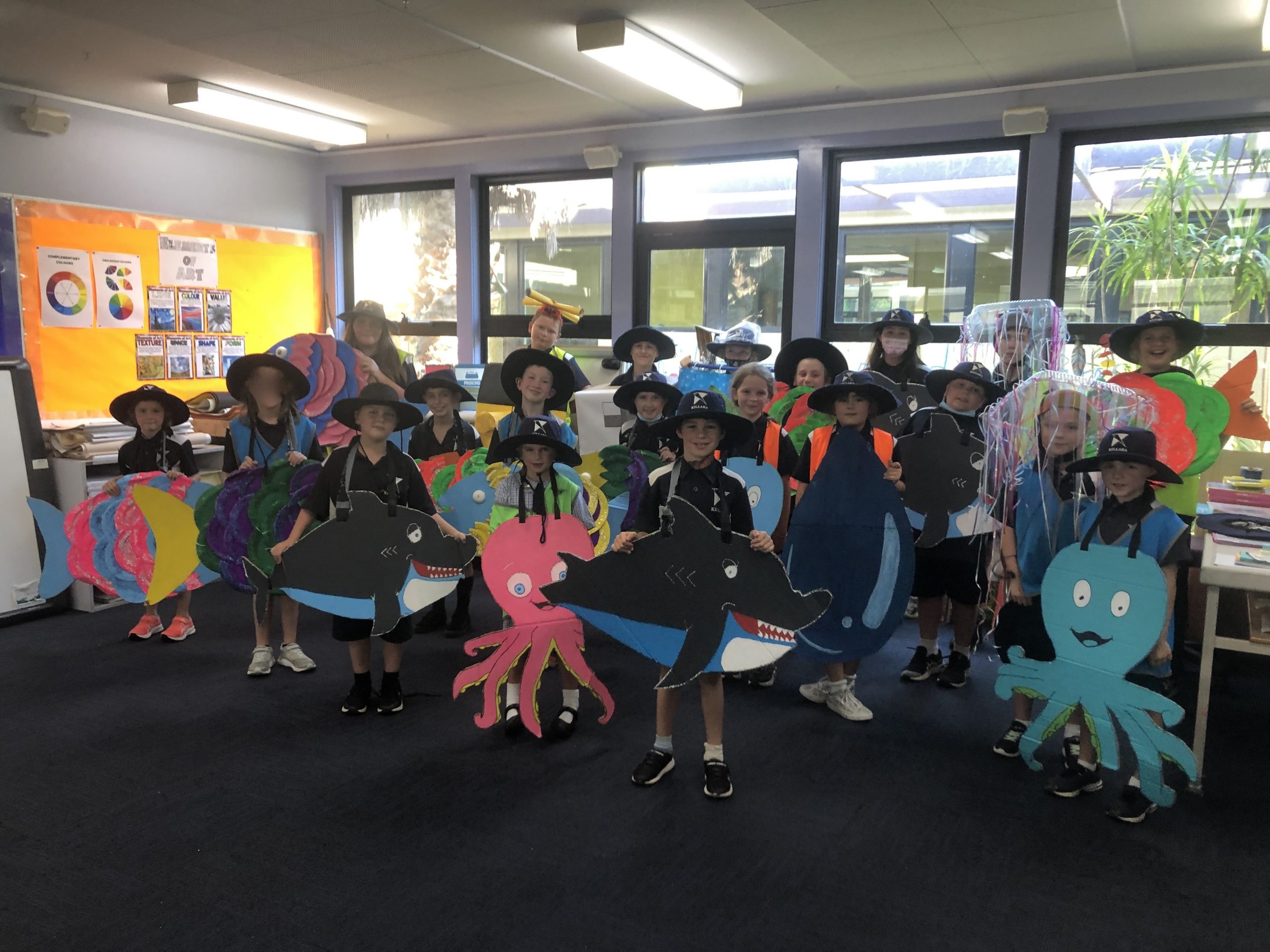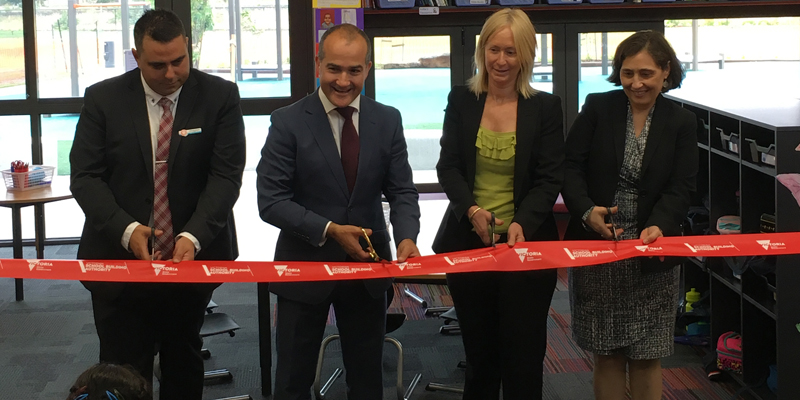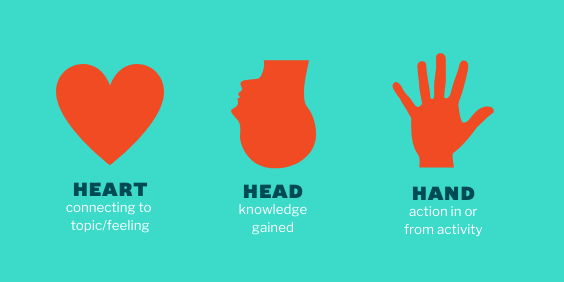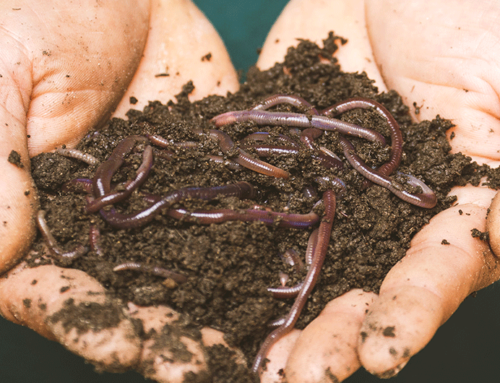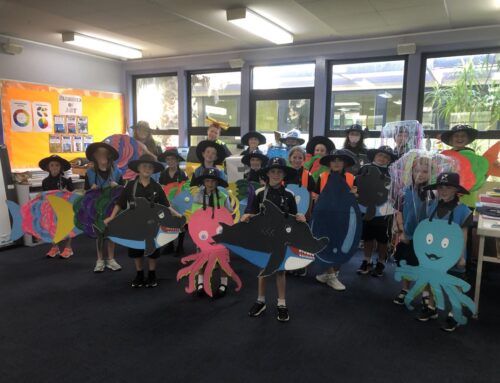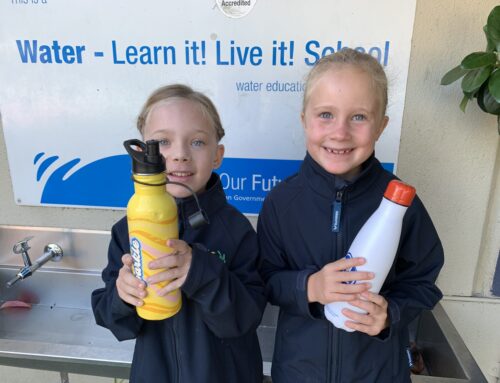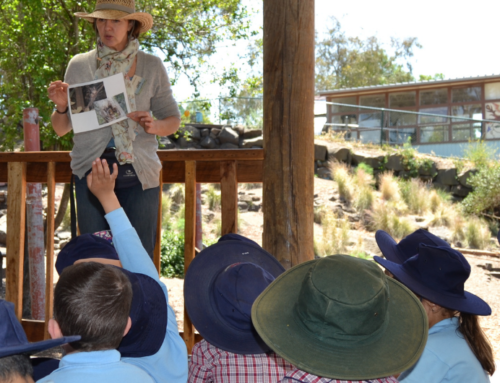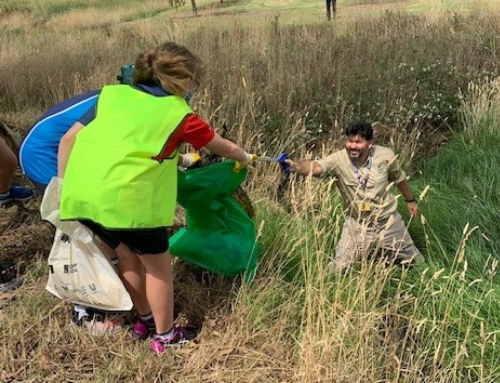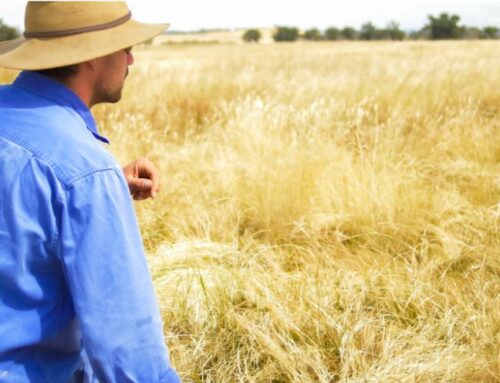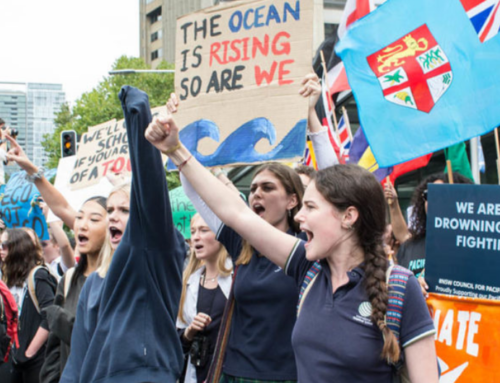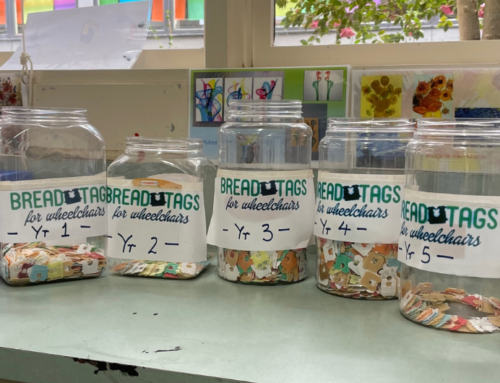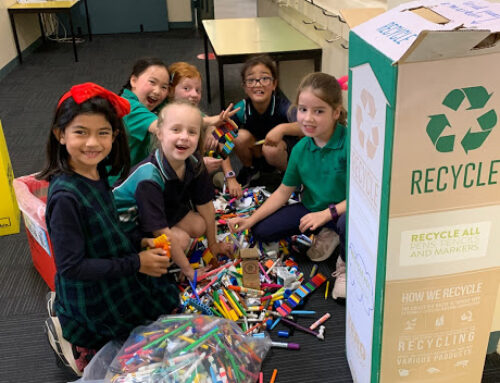By Emmanuelle Deloménède
Outreach Educator
As sustainability educators and change makers, we are constantly sharing stories of love, care, change, nature and abundance that inspire action. We know that the words, mediums and cues that we use have an unprecedented impact on how our narrative is received. Keeping ourselves up to date with the latest research in behaviour change is part of our ongoing professional development as a team. The frames and structures we use are therefore always evolving to make our delivery more empowering and catching.
Does this strike a chord? If you are a change maker in your community, the above considerations will no doubt resonate with you and we are excited to be sharing our top tips to stimulate and move your audience, compiled from leading behavioural change organisations.
We believe that the change we need is powered by individuals like yourselves that care and are leading by living a better life than the current outdated model of our society. We hope you find these tips useful and encourage you to experiment for yourself; we know that these practices do work!
“You must be the change you want to see in the world”, Mahatma Gandhi
The Golden Rule
People do care. Studies have been done and the results are unanimous – 89% of Aussies are concerned about pollution and overuse of natural resources. See Sustainability Victoria ‘Victorians’ perceptions of Climate Change’ reports for further information.
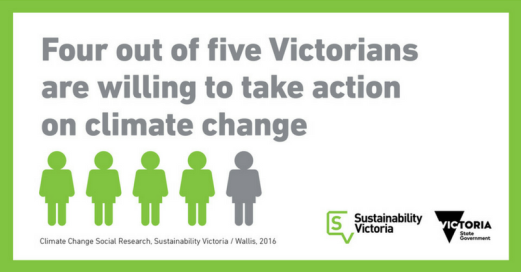
Approach your audience with this reality is mind, they do care. As this can be a surprising insight it is also worth sharing and reminding everyone that although we may seem (in)different from the outside we all carry within the same fundamentals values of unity, harmony and benevolence. A Danish TV Channel has captured this paradigm brilliantly in their ad All That We Share.
Values First
We think with our guts and make daily decisions based on the values we hold, not facts nor rationality. As a team we’ve been exploring the values of Common Cause, an organisation working to engage cultural values to create a more equitable, sustainable and democratic society. See Common Cause (Australia) to download a handbook or book a workshop. Here’s some of our take away messages.
Clarify what you care about and why it matters first in a simple and transparent manner such as the example in figure 1 from the Australian Conservation Foundation (ACF).
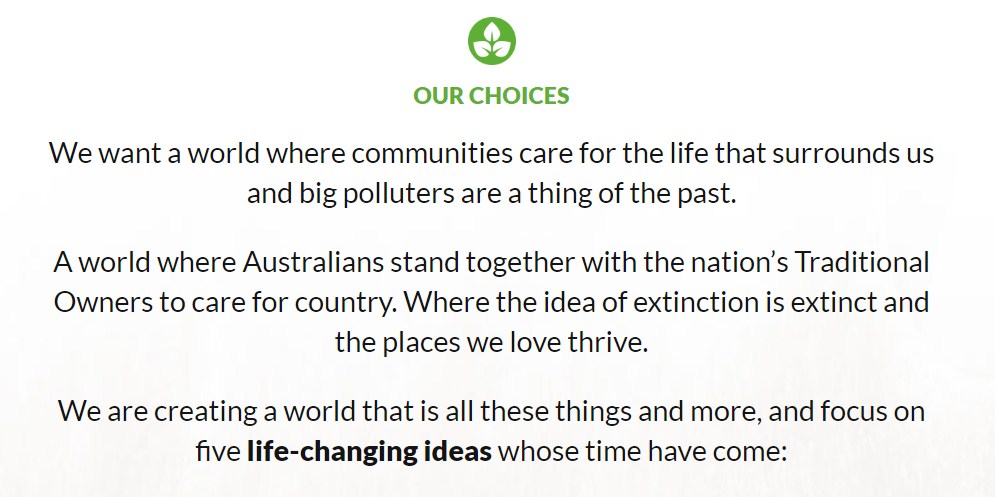
Figure 1: An example of putting values first from ACF Big Picture
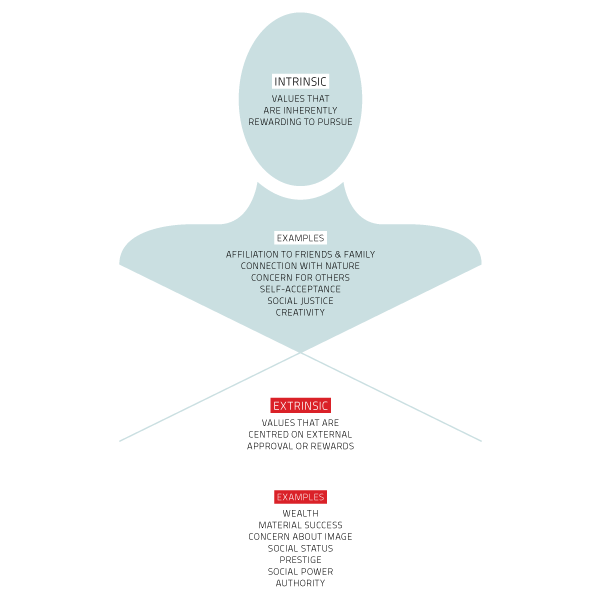
Figure 2: Intrinsic and extrinsic values examples from Common Cause Australia
Avoid mixed messages with both intrinsic and extrinsic references. People can’t hold two sets of opposing values in their head at the same time and this creates indecisions.
Make people dream
“I have a dream…” , Martin Luther King Jr
Inspire your audience with an evocative vision from the outset as illustrated in the example in Figure 3 from the Australian Conservation Foundation (ACF). Bring them to a better place where doing good is being well on a personal level. People have enough problems in their lives and need no more. Fuel their imagination with living examples of solutions and stories.
Visit Cohere’s blog post to find out more about Benefit Mindset and the connection between individual wellbeing and collective betterment.
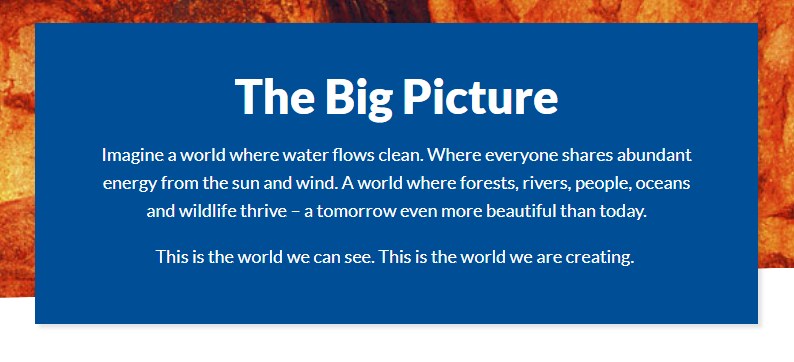
Figure 3: An example of starting with the vision from ACF Big Picture
The Power of Stories
“Stories move people to care and take action”, ACF Change the Story campaign.
Tell stories. Stories have always been and are our natural way of making sense of the world. They are a powerful way to explore challenges of our time through a humanistic lens that connects us all – for examples check out the Global Oneness Project’s film and picture essay resources.
Start with your own personal story to connect with your audience and illustrate where you are coming from.
Watch your Words
Use evocative words to transport your audience; appeal to their senses with visual, audible and living images such as the communications from ACF in figure 4.
Don’t be vague. Choose the active voice and point out the human agent in your story.
For example, instead of talking about ‘Stopping Adani’, we can talk about “Convincing Prime Minister Turnbull to choose our beautiful reef over Adani’s polluting coal mine”.
Other examples of active voice from ACF are:
We aim to protect the laws that nourish us
We work to influence urgent, transformative action to deliver lasting change on the scale required to secure a sustainable environment.

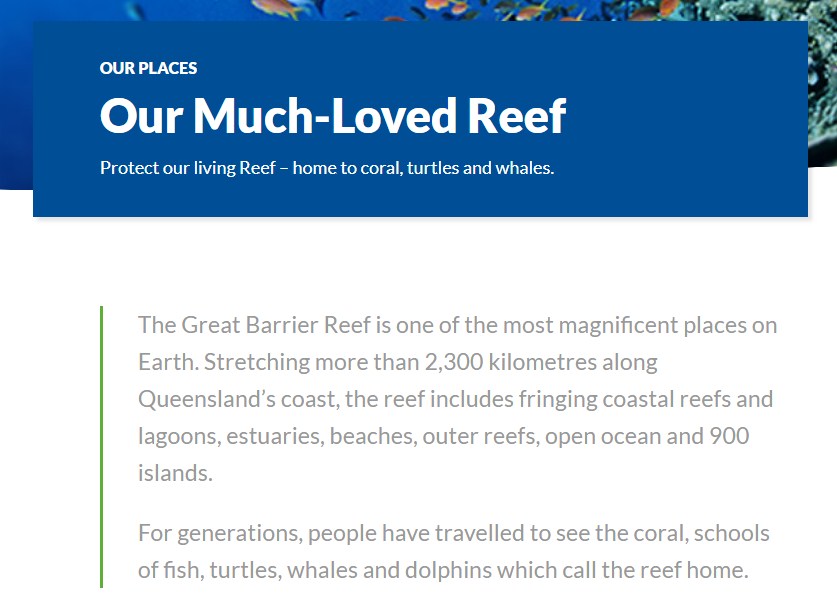
Figure 4: Examples of powerful use of language to move by ACF
Dismantle the Old Model
Share the new stories proud and loud. All we hear is the society imposed stories of money, power, social recognition and exploitation. We need to change the plot one story at a time illustrating a better alternative and co-creating a new norm.
Break the conventional process and reinvent a new model, asking yourself “If not … then what?”.
For example, apply this to “Meetings happen in the staff room at 3.30pm with the staff around tables and the presenter with a Power Point at the front”. What if meetings…
- Were not in the staff room, then what? They could be outside in the courtyard or local park, in a teacher’s classroom changing every week…
- Did not have staff around table, then what? Staff could be standing up, walking…
- Did not have a presenter, then what? They could led by students, staff, parents, facilitators…
- Did not use a Power Point presentation, then what? They could use music, stories, drawings…
Be Delightful
Everyone enjoys being pleasantly surprised. Make people pay attention and talk about your proposition, or in other words start a buzz, by being intriguing and sparking curiosity. An effective strategy to achieve this includes mixing two unrelated areas such as bushcare with campfire coffee tasting!
Make it Fun and Enjoyable
People will break their schedule and join you on the offer of an enjoyable and personally rewarding experience, including a nice location, interesting purpose, nice food, a safe and open environment.
Bring in playfulness and captivate your audience through games, humour, physical activities, costumes, participative art making and engaging videos.
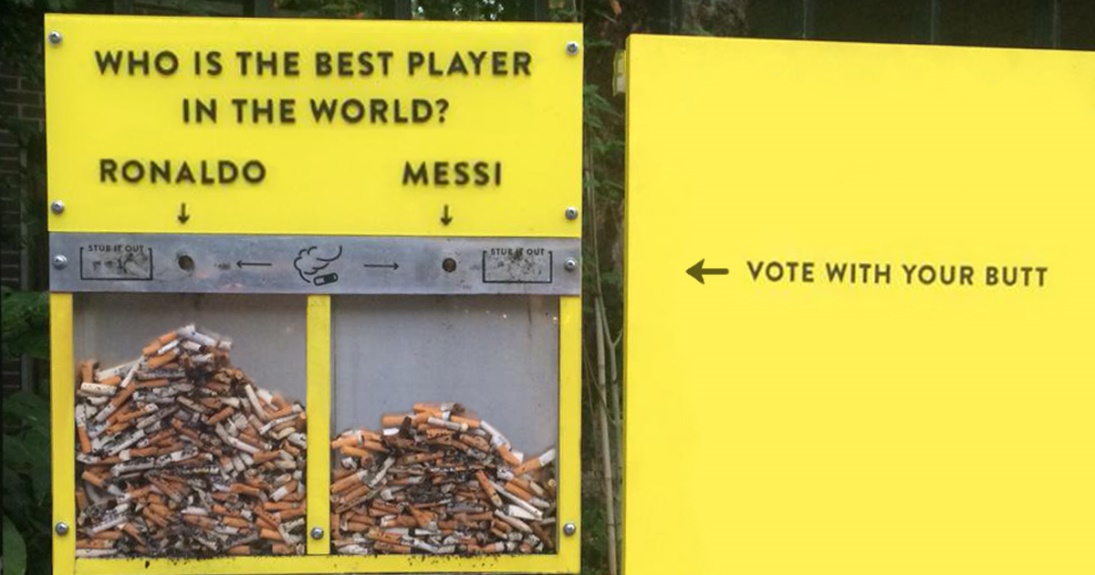
Figure 5: Example of playful cigarette butt litter reduction campaign
Fit Like a Glove
Ensure what you are suggesting is simple, plausible and fit within an appropriate and convenient context including time, location, systems and processes. The least resistance there is to overcome; the easier it will be for your peers to follow your suggestion.
Built on what is already existing and working well such as strategies, practices, resources, networks – integrate the ‘Bright Spots’.
Rally the Herd
We are social creatures and thrive on interacting with each other. Doing it together enables us to go far beyond what we can sustain and achieve individually. Make a team starting with the people that are already on board, interested and/or that you have good relationships with.
Being part of a team supports our yearning for belonging and identity while creating contagious social pressure outwardly, the first step to the start of a movement and formation of a new norm.
Celebrate small wins to foster the sense of purpose and achievement as well as to lift the profile of your actions.
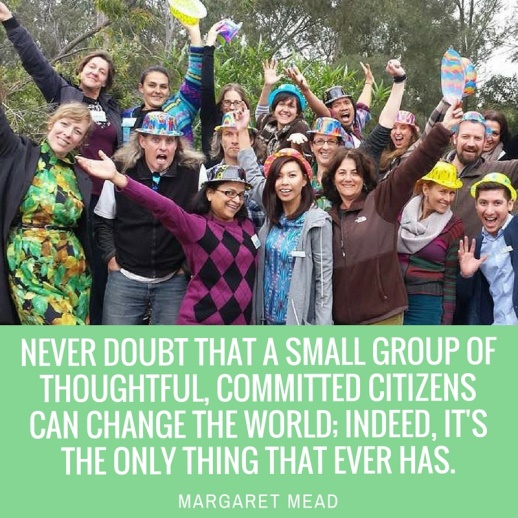
Figure 6: CERES Education team
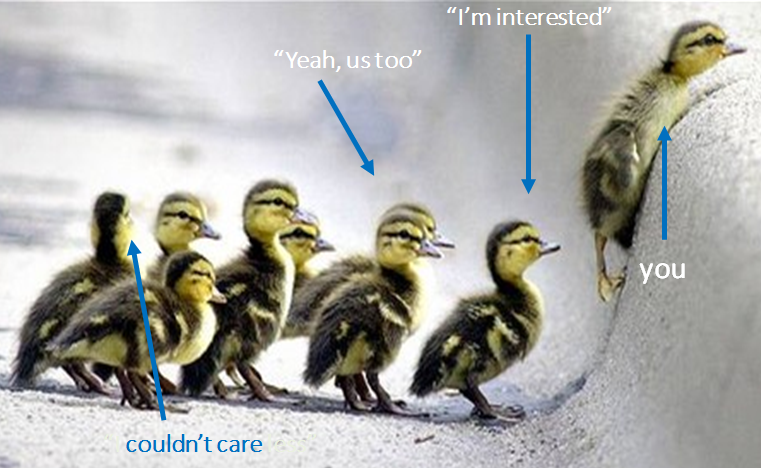
Figure 7: Start a movement targeting the right inviters
Just Do It
We can so easily spend a lot of time and energy researching and trying to design the perfect solution, to only find out way down the track that it is not working. How frustrating and unproductive!
Start small with a prototype and try it now! Ensure you have an evaluation mechanism in place to capture feedback which will enable you to slowly and incrementally tweak the solution until it fits perfectly.

Figure 8: Permaculture Principal #9
Bonus for Teachers
Education is the most powerful weapon which you can use to change the world”, Nelson Mandela
If you are a teacher wanting to embed sustainability in your teaching and institute whole school change, here are a few additional key ingredients for success –
Link sustainability projects/initiatives to the curriculum. The entire curriculum can be looked at and taught through the lens of sustainability. A practical way to do this is to search for key words relating to your desired project/initiative (e.g. seed, animal, garden) on the Victorian Curriculum and Assessment Authority website and filter the results on the right hand side.
Involve students from the start. Guide them to understand and connect with the issue then ask how they think it could be addressed. Let them design and implement the actions.
Use the power of modelling to instigate the subconscious realisations “Everyone else is doing it!”, “If them, why not me?”. Make sure your colleagues are enacting what you are promoting and show examples of other school teachers / students doing it.
References:
- Les Robinson, Engagement lab for change makers and Facilitation Skills workshops
- Australia Conservation Foundation
- Common Cause Australia
- Cohere, The Benefit Mindset

